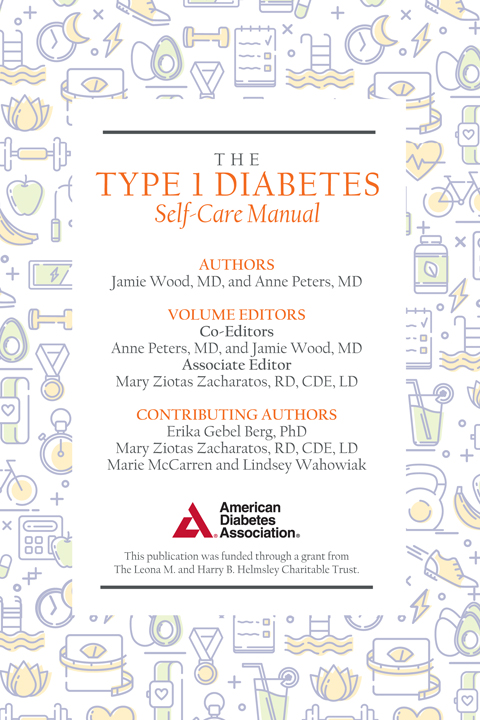
Associate Publisher, Books, Abe Ogden; Managing Editor, Rebekah Renshaw; Acquisitions Editor, Victor Van Beuren; Project Management and Composition, Cenveo Publisher Services; Production Manager, Melissa Sprott; Cover Design, Jenn French Designs; Printer, Versa Press
2018 by the American Diabetes Association. All Rights Reserved. No part of this publication may be reproduced or transmitted in any form or by any means, electronic or mechanical, including duplication, recording, or any information storage and retrieval system, without the prior written permission of the American Diabetes Association.
Printed in the United States of America
1 3 5 7 9 10 8 6 4 2
The suggestions and information contained in this publication are generally consistent with the Standards of Medical Care in Diabetes and other policies of the American Diabetes Association, but they do not represent the policy or position of the Association or any of its boards or committees. Reasonable steps have been taken to ensure the accuracy of the information presented. However, the American Diabetes Association cannot ensure the safety or efficacy of any product or service described in this publication. Individuals are advised to consult a physician or other appropriate health care professional before undertaking any diet or exercise program or taking any medication referred to in this publication. Professionals must use and apply their own professional judgment, experience, and training and should not rely solely on the information contained in this publication before prescribing any diet, exercise, or medication. The American Diabetes Associationits officers, directors, employees, volunteers, and membersassumes no responsibility or liability for personal or other injury, loss, or damage that may result from the suggestions or information in this publication.
The opinions and perspectives of the Testimonial Authors whose content is featured in this work are entirely their own and do not represent the policies or positions of the American Diabetes Association.
 The paper in this publication meets the requirements of the ANSI Standard Z39.48-1992 (permanence of paper).
The paper in this publication meets the requirements of the ANSI Standard Z39.48-1992 (permanence of paper).
ADA titles may be purchased for business or promotional use or for special sales. To purchase more than 50 copies of this book at a discount, or for custom editions of this book with your logo, contact the American Diabetes Association at the address below or at booksales@diabetes.org.
American Diabetes Association
2451 Crystal Drive, Suite 900
Arlington, VA 22202
DOI: 10.2337/9781580406208
Library of Congress Cataloging-in-Publication Data
Names: Wood, Jamie (Pediatric endocrinologist), author.
Title: The type 1 diabetes self-care manual : a complete guide to type 1
diabetes across the lifespan for people with diabetes, parents, and
caregivers / Jamie Wood and Anne Peters.
Description: Arlington : American Diabetes Association, [2018] | Includes
index.
Identifiers: LCCN 2017046590 | ISBN 9781580406208 (softcover : alk. paper)
Subjects: LCSH: Diabetes--Popular works--Handbooks, manuals, etc. |
Diabetes--Treatment--Popular works. | Self-care, Health--Popular works.
Classification: LCC RC660.4 .W65 2018 | DDC 616.4/62--dc23
LC record available at https://lccn.loc.gov/2017046590
eISBN: 978-1-58040-692-5
To people with type 1 diabetes, who are simply the most amazing individuals I know, and to diabetes educators everywhere, whom I cannot thank enough for their tireless efforts on behalf of people who need them.
A.P.
To the parents of children living with type 1 diabetes, who are strong and work so hard to keep their children healthy, and to the children and adolescents living with type 1 diabetes, who are the bravest and coolest kids out there.
J.W.
Contents
This book was funded by a generous grant from The Leona M. and Harry B. Helmsley Charitable Trust.
It would not exist except for the efforts of all of the authors of the American Diabetes Association/JDRF Type 1 Diabetes Sourcebook and in particular Drs. Lori Laffel, Jane Chiang, and David Kendall, who were essential to the creation of that book. We are grateful to all.
We are indebted to the contributions of various writers who helped draft versions of this manuscript and patient stories: Erika Gebel Berg, Mary Ziotas Zacharatos, Marie McCarren, and Lindsey Wahowiak.
The ADA publications group has been patient, helpful, and encouraging, and we could not have done this without them.
We thank the members of the diabetes community, our patients, our friends, and most of all our families, who (mostly) forgive us our long working hours and provide an abundance of joy.

:
The Basics of Type 1 Diabetes
Diabetes impacts millions of people around the world. Most have type 2 diabetes, but an important minority have type 1 diabetes. Type 1 diabetes has unique features and, contrary to popular belief, is not a disease only of children; it occurs at any age and in people of every race, shape, and size. In fact, there are more adults who have type 1 diabetes than children. This book was written to discuss type 1 diabetes in everyone, from infants to the elderly, from those who are newly diagnosed to those who have had it for many years.
No matter what the age, however, it is important to realize that while diabetes isnt yet a curable disease, it is a very treatable disease, and no matter how frightening and frustrating it is, people with diabetes can live long, healthy, and happy lives. Our goal is to provide you with the tools and resources to help make that happen.
Type 1 diabetes can be diagnosed at any age and in people of every race, shape, and size.
What Is Diabetes?
All books on diabetes start with a description of diabetes. It is often frustrating for people with type 1 diabetes to be misperceived as someone with type 2 diabetes. Although there are many similarities between type 1 and type 2 diabetes, the cause of each is very different. And generally the treatment is quite different. However, we are discovering more overlap between the types, especially for adults who are newly diagnosed, and this can be confusing. This will be discussed in more detail below and in .
Age alone does not define what type of diabetes you have.
The feature that unites all types of diabetes is too much glucose in the blood. We all need glucose, a type of sugar, to fuel our brain, heart, and muscles. Glucose is found inside cells, where it is changed into energy as needed, as well as in the bloodstream, where it is carried around to all of our organs. Blood glucose either comes from the food we eat or is made by the liver. Our bodies have a wonderful and complicated system for making sure that blood glucose levels are normal day in and day out.
Normal blood glucose levels are usually around 100 mg/dL. Before eating, normal blood glucose levels are 70100 mg/dL, while after eating the blood glucose levels never go above 140 mg/dL (Table 1.1). If our glucose levels were to fall too low, we would lose the ability to think and function normally. If they were to go too high, it could cause damage to the body that happens over the course of many years.
Table 1.1 Normal (Nondiabetic) Blood Glucose Levels

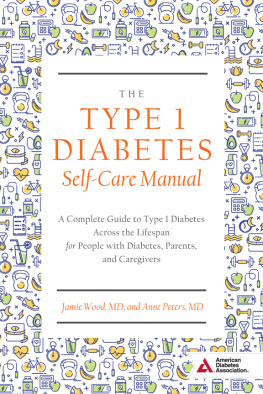

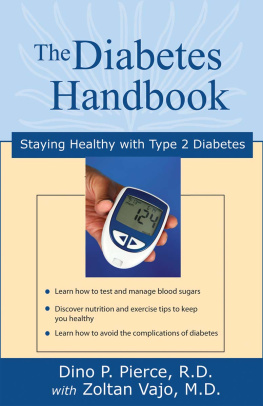



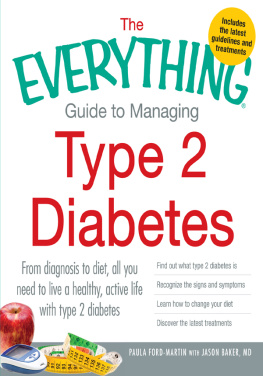
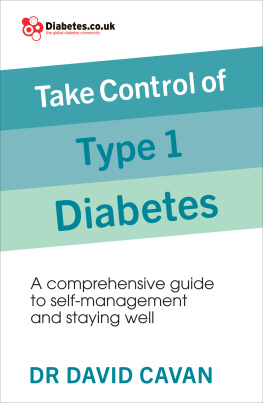
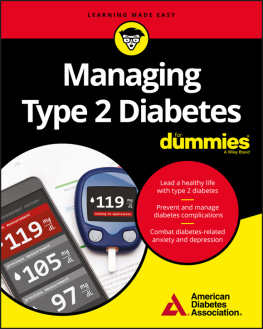




 The paper in this publication meets the requirements of the ANSI Standard Z39.48-1992 (permanence of paper).
The paper in this publication meets the requirements of the ANSI Standard Z39.48-1992 (permanence of paper).